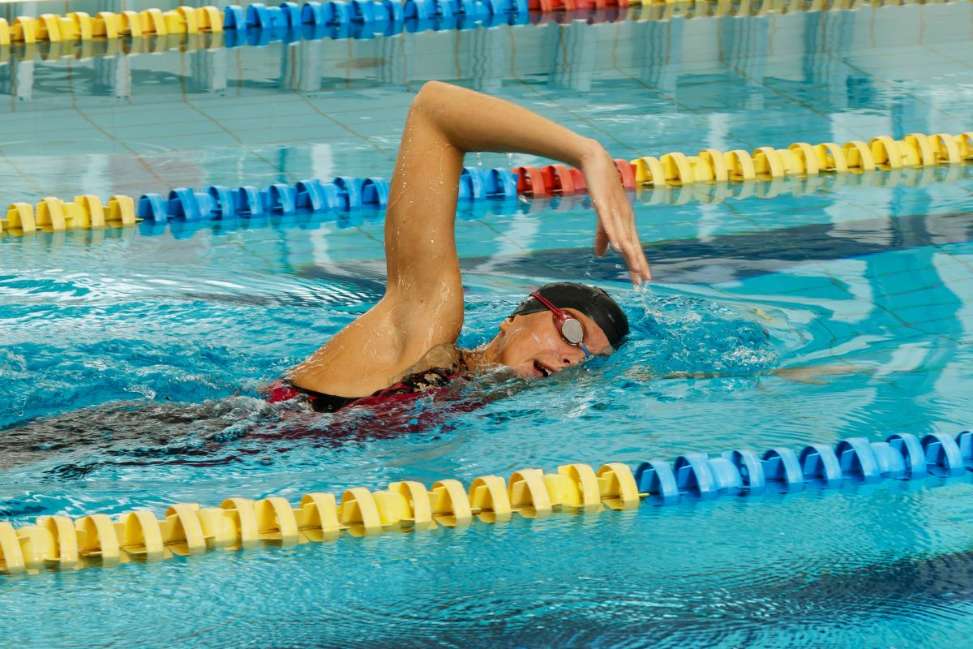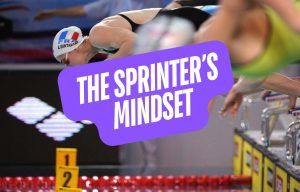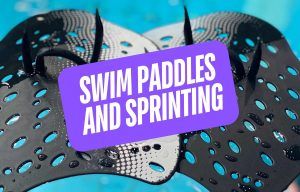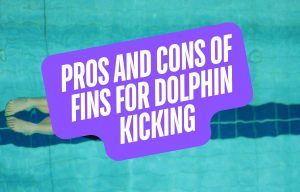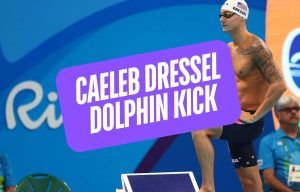Ready to take your freestyle technique to the next level? Here’s a look at the most common freestyle technique errors and some drills and tips to fix them.
Every swimmer is told about the importance of swimming with proper freestyle technique.
It’s drilled into us from the first stages of swim lessons, through our age group years, and as we progress towards collegiate and masters swimming.
After all, swimming with proper technique in the water not only helps us swim more efficiently (i.e., faster) but also reduces the risk factors for swimmer’s shoulder.
And even though many of us are not freestylers, according to a study of competitive swimmers published in the Journal of Orthopedic and Sports Physical Therapy, swimmers of all strokes spend around 80% of swim workouts doing freestyle.
In this article, we will look at a study that examined a group of experienced competitive swimmers to evaluate the most common freestyle swimming technique errors.
Later, we will also look at some drills for better freestyle technique and tips for fixing those mistakes so you can swim faster and with healthier shoulders.
Let’s jump right in.
The Study: Methodology and Participants
The study took 31 female swimmers from the University of North Carolina, all whom averaged 11 years of competitive swimming experience.
The swimmers were all healthy at the time, not presenting with any shoulder injuries or limitations.
Each swimmer was filmed from the front and side, above and below the water.
They were then evaluated during the following phases of the freestyle stroke:
Hand entry
Does the hand enter the water lateral to the head and median to the shoulder? When the hand enters too wide or too narrow, the shoulder experiences impingement.
Does the hand enter fingers-first or thumbs-first? The latter causes stress to the biceps attachment to the anterior labrum.
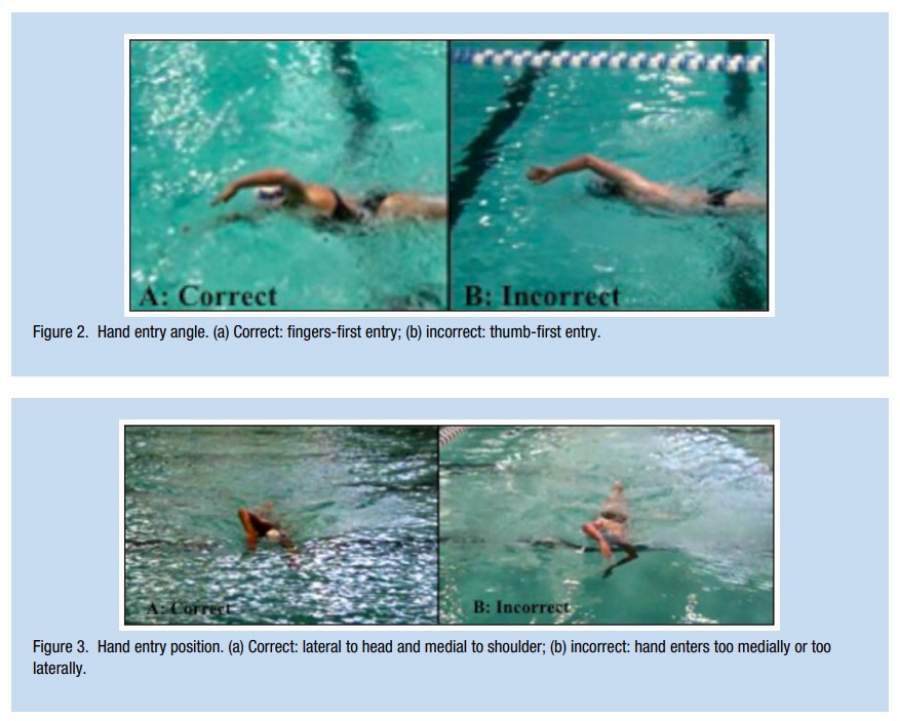
Pull-through
Does the swimmer have an elbow higher than the hand during the pull-through? A low elbow reduces power and increases external rotation.
Does the swimmer pull back straight or do they utilize an S-shaped pull that increase time spent in an impingement position?
Recovery
Does the elbow remain higher than the wrist? Dropped elbows lead to an improper hand entry.
Does the body roll too little or too much? Excessive body roll—greater than 45-degrees—leads to a crossover hand entry position and can increase mechanical stress on the shoulder.
Head position
Is the head in a neutral position with the eye pointing downwards? A head position of eyes-forward sinks the hips and increases the risk of impingement by reducing scap movement.
The swimmers performed several 50-yard swimming trials at varying intensities, and the videos were then examined by two collegiate swimming coaches and a certified athletic trainer.
The Most Common Mistakes in Freestyle Swimming
When analyzed, the swimmers presented with the following technique errors when freestyle swimming:
- Dropped elbow during the pull-through phase – 61.3%
- Dropped elbow during the recovery phase – 53.2%
- Eyes-forward head position – 46.8%
- Incorrect hand entry position – 45.2%
- Incorrect hand entry angle – 38.71%
- Incorrect pull-through pattern – 32.3%
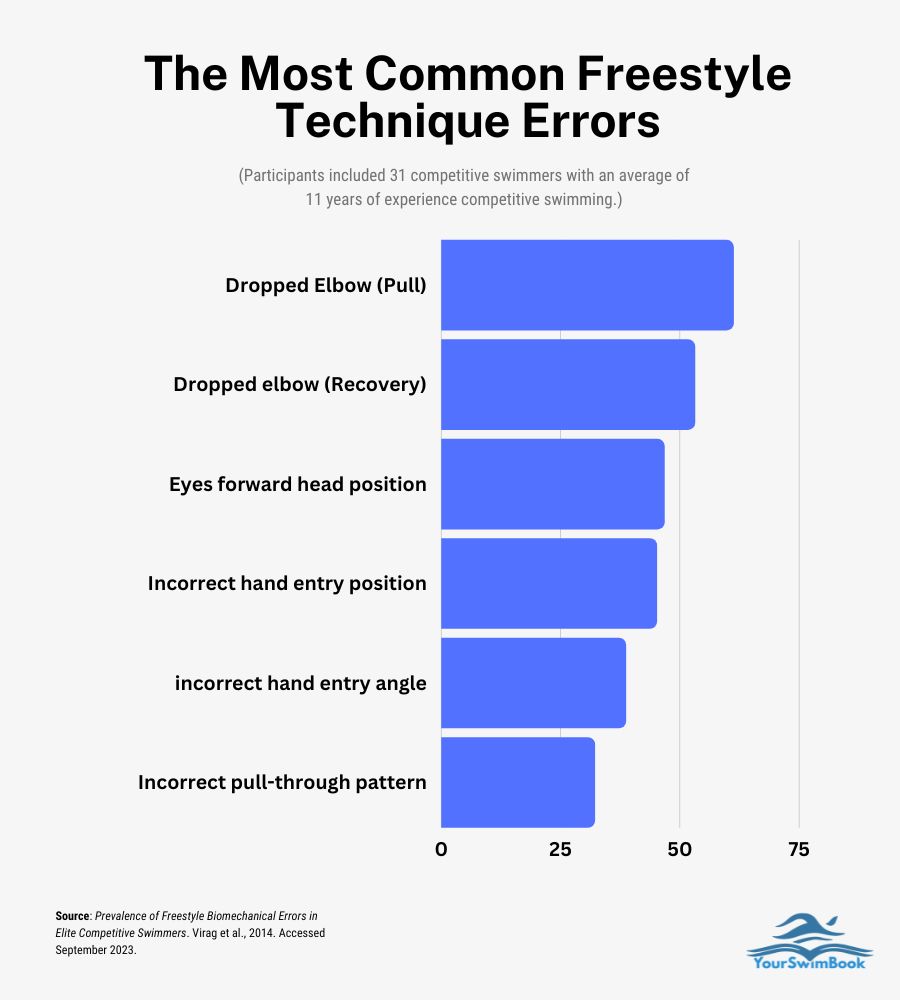
Perhaps most interestingly, however, was that many of the technique errors compounded.
When swimmers had a dropped elbow during the recovery, they were more likely to use a thumbs-first hand entry angle and use an incorrect angle for hand entry at the top of the stroke.
When swimmers had their foreheads plowing the water, swimming with eyes forward instead of down, the pulling motion was also incorrect.
Freestyle swimming technique is best thought of as a system, with different phases and body movements influencing the movements and phases to come.
Correcting Common Freestyle Swimming Mistakes
Knowing what the problem is in your freestyle swimming technique is obviously the first step, but addressing those issues is next.
Here are some tips and drills for addressing the most common freestyle mistakes and how to improve overall freestyle technique:
Work the early vertical forearm
The catch of the freestyle stroke is where you are initiating the pulling motion. It’s also where you are “catching” as much water as possible to pull yourself across the pool more quickly.
Improving your early vertical forearm reduces the dropped elbow at the front of the freestyle pull.
You can do this in two key ways:
Sculling
Strap on a swim snorkel, stuff a pull buoy between your legs, and do some sculling at the top of the stroke.
Extend your arms out in front of you, move your hands back and forth to catch the water, and pitch your elbows higher than your hands.
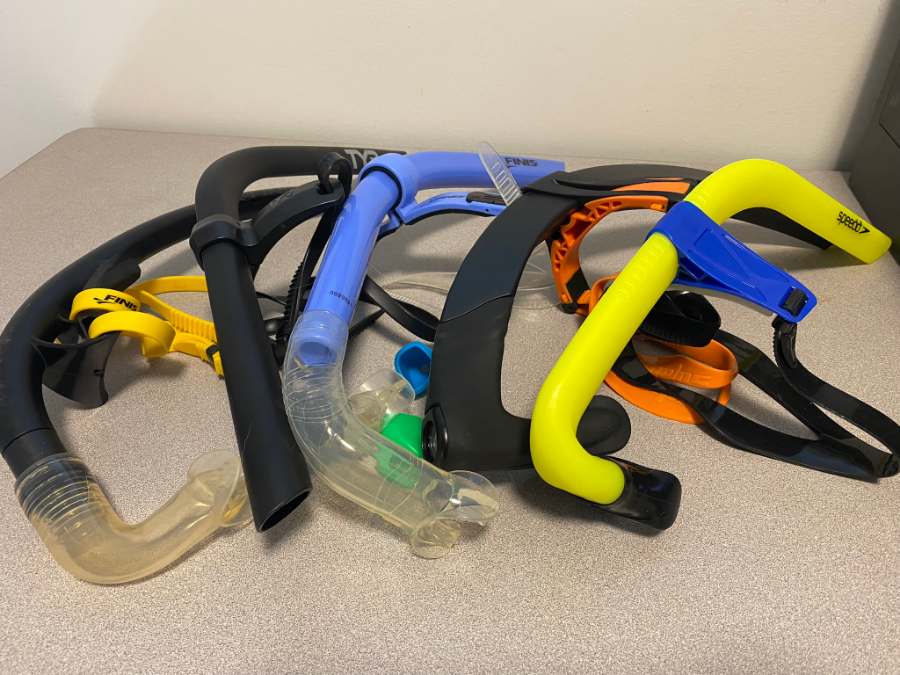
Resistance band pulls
Develop muscle memory and improve range of motion in the catch with a resistance band on dryland. Grab a longer Theraband or stretch cord, wrap it around something sturdy.
Next, hinge at the hip so that you are leaning forward, extend the arm, and mimic the catch of the stroke with light resistance.
Do this 10-15 times per side before your next swim workout to prime your shoulder muscles to nail that early vertical forearm.
Ultimately, swimming with a more mindful early vertical forearm will help position your hand for maximum power in the water and also help you swim more efficiently.
Incorporate light resistance
Swimmers love their toys in the water, whether it’s a set of swim training fins, over-sized swim paddles, or resistance tubing and having a teammate pull them across the length of the pool at Mach 9 speeds.
And while these tools are generally utilized for speed and power purposes, light resistance aids can help you improve swim technique.
One of my favorite early season technique-boosters is putting on a light set of DragSox or a swim parachute and doing 25s at around 50-60% effort focusing only on technique.
The resistance forces you to swim with better body position (i.e., reducing excess body roll), a higher elbow at the catch, and really helps you feel every part of your stroke.
Again, the key is not adding too much resistance here—the goal is focused, technical precision at light resistance.
Swim mindfully
Swimmers are in the water A LOT. It’s worth considering how much of that time is spent mindlessly going through the motions versus swimming with intention and mindfulness.
If you’re planning on doing a 3,000m workout today, that’s 3,000m of swimming you can do with awesome technique… or not.
Essentially, every meter or yard you do in the pool is an opportunity to be technique-oriented, whether you are warming up, warming down, or grinding through a long, heart-rate-pounding main set.
Swim more mindfully each time you hit the water, and better technique will become second-nature.
Additional Freestyle Swimming Resources
How to Develop an Unstoppable Freestyle Kick. The top athletes in the pool are not just fast swimmers, they are fast kickers. Here’s your guide to an elite freestyle kick.
6 Freestyle Swim Sets and Workouts. Ready to up your freestyle? Here are six of the best freestyle swim workouts and sets.
Super Slow Swimming: How to Improve Your Technique and Feel for the Water. Swimming slowly and deliberately can make you a faster, more efficient swimmer.

